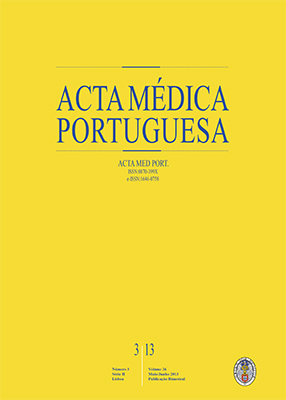Sciatic Nerve High Division: Two Different Anatomical Variants
DOI:
https://doi.org/10.20344/amp.4246Abstract
Introduction: Sciatic nerve variations are relatively common. These variations are often very significant in several fields of Medicine. The purpose of this paper is to present two such variants and discuss their clinical implications.Material and Methods: Three Caucasian cadavers with no prior history of lower limb trauma or surgery were dissected and found to present anatomical variants of the sciatic nerve.
Results: In all cases the sciatic nerve divided above the popliteal fossa. In two cases (cadavers 1 and 2) it divided on both sides in the inferior portion of the gluteal region in its two terminal branches: the common fibular and the tibial nerves. In another case (cadaver 3) the sciatic nerve was found to divide inside the pelvis just before coursing the greater sciatic notch. The common fibular nerve exited the pelvis above the pyriformis muscle and then passed along its posterior aspect, while the tibial nerve coursed deep to the pyriformis muscle.
Discussion: According to the literature, the anatomical variant described in cadaver 3 is considered relatively rare. This variant can predispose to nerve entrapment and thus to the pyriformis syndrome, sciatica and coccygodynia. The high division of the sciatic nerve, as presented in cadavers 1 and 2, can make popliteal nerve blocks partially ineffective.
Conclusion: The anatomical variants associated with a high division of the sciatic nerve, must always be born in mind, as they are relatively prevalent, and have important clinical implications, namely in Anesthesiology, Neurology, Sports Medicine and Surgery.
Downloads
Downloads
Published
How to Cite
Issue
Section
License
All the articles published in the AMP are open access and comply with the requirements of funding agencies or academic institutions. The AMP is governed by the terms of the Creative Commons ‘Attribution – Non-Commercial Use - (CC-BY-NC)’ license, regarding the use by third parties.
It is the author’s responsibility to obtain approval for the reproduction of figures, tables, etc. from other publications.
Upon acceptance of an article for publication, the authors will be asked to complete the ICMJE “Copyright Liability and Copyright Sharing Statement “(http://www.actamedicaportuguesa.com/info/AMP-NormasPublicacao.pdf) and the “Declaration of Potential Conflicts of Interest” (http:// www.icmje.org/conflicts-of-interest). An e-mail will be sent to the corresponding author to acknowledge receipt of the manuscript.
After publication, the authors are authorised to make their articles available in repositories of their institutions of origin, as long as they always mention where they were published and according to the Creative Commons license.









